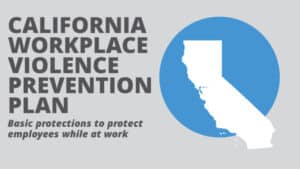
Our question this week comes from Anna K. from The Avenues who asks: “I work for a company of about 30 people. I have to find a new school for my daughter because we will be moving to Daily City. I need to go look during the work week because that’s when they have ‘open houses.’ I asked my foreman if I could take off a couple of hours to go tour the school with my daughter and she said ‘no.’ I told her I would use my vacation and she said that she couldn’t spare me this month. What are my rights, if any, to do this very important thing for my daughter?”
Anna, as a parent I know how important it is to find the right school for your child. The good news is that due to a recent change in the law the State of California now recognizes that too.
Senate Bill 579 (SB 579) was introduced, and passed, last session by Senator Hanna Beth Jackson, a Democrat from Santa Barbara to expand protection for workers who need time to select a daycare or K – 12 school for their child.
Previously California law prohibited an employer who employs 25 or more employees working at the same location from discharging or discriminating against an employee who is a parent, guardian, or grandparent having custody of a child in a licensed child day care facility or in kindergarten or grades 1 to 12, inclusive, for taking off up to 40 hours each year for the purpose of participating in school activities, subject to specified conditions.
Under the law, an employee must provide documentation regarding these activities upon request by an employer. The law provides remedies to employees discharged, demoted, or in any other manner discriminated against as a result of his or her exercise of this right to take time off. The law requires an employer who provides sick leave for employees to permit an employee to use the employee’s accrued and available sick leave entitlement to attend to the illness of a child, parent, spouse, or domestic partner and prohibits an employer from denying an employee that right or discrimination against one who uses it.
SB 579 expanded this protection, by amending The California Labor Code, Section 230.8, to provide employees working in business with 25 or more people employed in the same location to now use up to 40 hours in each year for locating, enrolling in, or participating in activities of the child’s school if they give the employer reasonable notice prior to taking the time off.
SB 579 restricts the maximum number of hours used for this purpose in any month to no more than 8 hours. If more than one parent of a child is employed by the same employer at the same work site, the entitlement for a planned absence as to that child applies, at any one time, only to the parent who first gives notice to the employer, such that another parent may take a planned absence simultaneously as to that same only if he or she obtains the employer’s approval for the requested time off.
An employee taking such leave must utilize existing vacation, personal leave, or compensatory time off unless otherwise provided by a collective bargaining agreement entered into before January 1, 1995, and in effect on that date. An employee also may utilize time off without pay for this purpose, to the extent made available by his or her employer. The entitlement of any employee to these rights may not be diminished by any collective bargaining agreement term or condition that is agreed to on or after January 1, 1995.
An employer is entitled to request documentation from the school or licensed child care provider to prove that you engaged in the authorized activities. This documentation should be in the form of written verification which the school or licensed child care provider deems appropriate and reasonable.
Any employee who is discharged, threatened with discharge, demoted, suspended, or in any other manner discriminated against in terms and conditions of employment by his or her employer because the employee has taken time off under this law shall be entitled to reinstatement and reimbursement for lost wages and work benefits.
Any employer who willfully refuses to rehire, promote, or otherwise restore an employee or former employee who has been determined to be eligible for rehiring or promotion by a grievance procedure, arbitration, or hearing authorized by law shall be subject to a civil penalty in an amount equal to three times the amount of the employee’s lost wages and work benefits.
If you have a problem with getting this important time off leave, give your employer a copy of this article and suggest that your employer read Section 230.8 of the California Labor Code.
Try and resolve the issue amicably with your employer but, if you can’t, or you suffer retaliation, contact a contingent fee based Trial Lawyer to protect your rights, obtain your reinstatement and/or seek your lost wages or benefits.
This article was written by Chris Dolan and published by The San Francisco Examiner. To read all of Chris’ articles on the law published by the Examiner click here.










